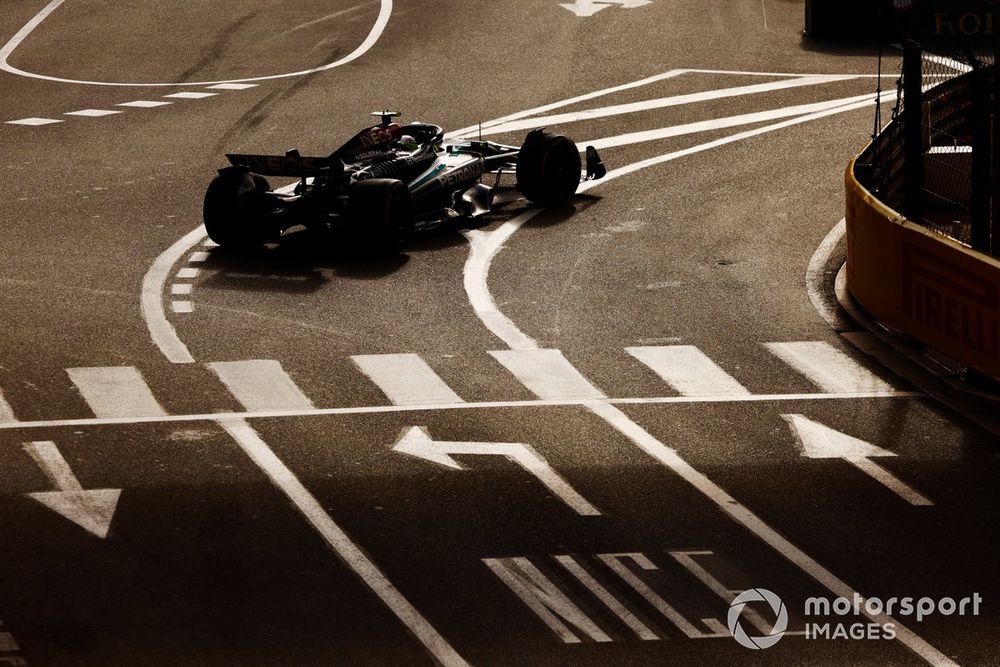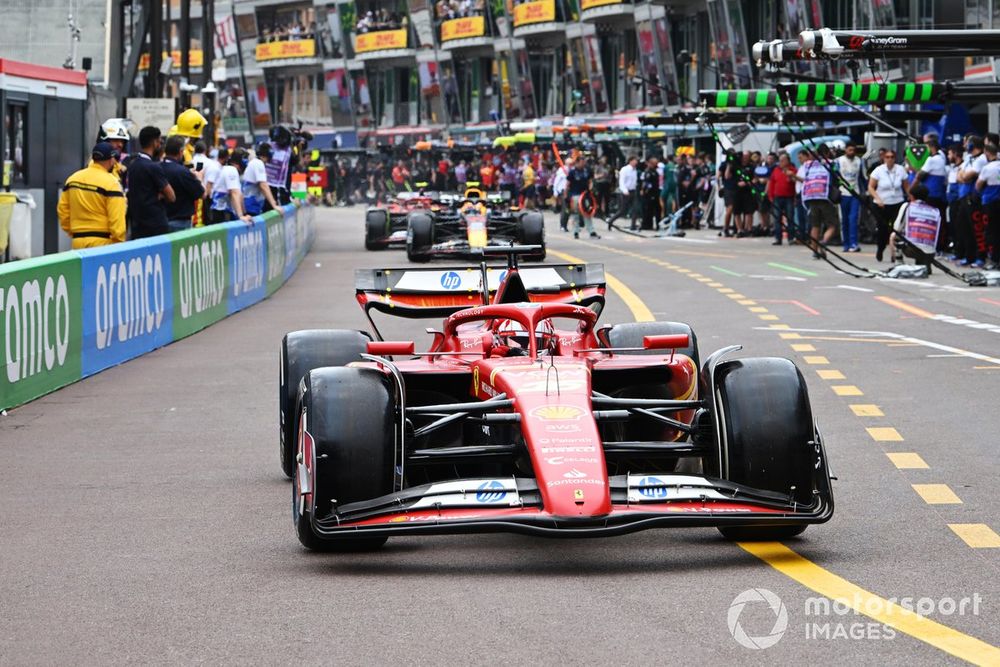Charles Leclerc and Ferrari ended Friday on top at Formula 1’s 2024 Monaco Grand Prix – the home hero in command in FP2, while Red Bull’s Max Verstappen had another low-key Friday.
The FP2 long-run averages suggest the world champion and his team have a clear edge, yet this will count for very little if they cannot sort a better set-up ahead of qualifying. So far, for that critical Monaco session, Leclerc is predicted to dominate.
Adding to the mix on Friday was Mercedes and Aston Martin starting this event strongly with Lewis Hamilton and Fernando Alonso. McLaren, meanwhile, is really yet to show its hand even over one lap after completing different run plans to most of the rest.
The story of the day
First practice at Monaco, as ever, was about building driver confidence, with the times falling around six seconds from initial benchmarks to 1m12.169s by the end of the first one-hour session.
That was set by Mercedes driver Hamilton, the Silver and Black Arrows squad benefitting from not having to compromise its set-up for low- and high-speed corners here as Monaco lacks any of the latter.
Leclerc then headed the times pretty much throughout FP2 – his pace on the mediums early on nearly a second quicker than the rest. But when the soft tyres went on for the qualifying simulation runs, not only did he go quicker but Verstappen couldn’t sneak ahead of Leclerc’s harder-compound previous personal best.

Hamilton ended Friday as Leclerc’s nearest challenger, as Mercedes appeared suited to the low-speed Monaco layout
Photo by: Zak Mauger / Motorsport Images
Both drivers then had complicated later attempts on the softs, with Leclerc having two oversteer moments at the hairpin and Portier – abandoning his lap after the second when he had just set FP2’s quickest time in the first sector.
Verstappen, meanwhile, had a few minutes earlier thwacked the barrier at the previous corner – Turn 7 beneath Mirabeau – with his left-rear and had to pit to get things checked over.
He reappeared soon enough to join the long-run data gathering that typically ends FP2, albeit for a much shorter period at Monaco as in a dry Sunday event here – as is forecast – race pace matters much less given the overtaking challenge at this very narrow venue. Come the session’s end, the top two drivers in the championship were split by Hamilton and Alonso.
When comparing their quickest laps, Verstappen ships a tenth to Leclerc in the Loews hairpin alone
Hamilton’s best time came on used softs compared to Leclerc ahead, as Mercedes (and McLaren) ran the same set of softs they’d used for qualifying simulations in FP1 due to a predicted rain threat for the second session that never came.
Resting against this how Leclerc’s FP2-leading time came nearly 10 minutes before Hamilton’s, which means he actually missed out on up to 0.4s of track evolution. This will be another major Monaco theme to watch in qualifying.
What the data tells us
In terms of engine modes, the GPS data from the fastest four cars shows Verstappen as the outlier – his straightline speed notably down in all the acceleration zones around this short track.
At the power peak at the exit of the tunnel and the run down to the Nouvelle chicane below, Verstappen’s top speed is 172.7mph. This compares with 176.5mph for Leclerc, 177.7mph for Hamilton and 178.3mph for Alonso.

For a second Friday in succession, Red Bull is on the backfoot, but a turnaround might be trickier to achieve at Monaco compared to Imola
Photo by: Glenn Dunbar / Motorsport Images
This is a typical Red Bull tactic for Friday practice. Gains on engine modes being turned up to full whack for qualifying – which will also be the case for the rest but likely to a lesser extent elsewhere – are to be expected for Verstappen’s squad.
The GPS traces also show Ferrari gaining on Red Bull through the low-speed turns the RB20 and its predecessors have detested. When comparing their quickest laps, Verstappen ships a tenth to Leclerc in the Loews hairpin alone.
Again, a higher engine mode will compensate this somewhat tomorrow. But Autosport observed here in FP1 that each time by, Verstappen and team-mate Sergio Perez were just having to delay an age to get on the throttle as they waited for their noses to swing through the very tight left-hander.
This is backed up in the GPS data, while we also observed just how smoothly Leclerc was able to rotate his SF-24 through the whole sequence throughout FP1. The Red Bulls were just less silky, plus oscillating more over the bump on the approach to the hairpin’s apex.
In FP2, both Red Bull drivers complained about their ride quality. This centres on their low ride heights, with Perez’s RB20 a particular handful when turning for Massenet at the top of the hill in the first sector where he whacked the inside barriers in the early stages. Verstappen, meanwhile, was struggling more with a set-up that meant he couldn’t “drive better over the kerbs”, per Red Bull motorsport advisor Helmut Marko.
Concentrating on Red Bull and Ferrari, which given how today has played out must be considered the favourites for pole (with the caveat a McLaren rise is expected and drivers from other squads can spring a surprise on this unique layout), and things do look much better for Verstappen and co.
This is because Perez’s long run average over 10 laps on the mediums came in at 1m15.920s, compared to Ferrari’s best via Carlos Sainz at 1m15.377s over 11 laps. Sainz seemed less comfortable overall compared to Leclerc on Friday.

Red Bull’s long-run pace was superior to its rivals, but it won’t be able to exploit it if its drivers qualify down the order
Photo by: Sam Bloxham / Motorsport Images
Verstappen ran the hards through the late long runs, while Leclerc’s average was more consistent than Sainz’s but much slower at 1m16.599s, with the Spaniard’s average calculation boosted by having five outliers removed. These had to come out due to the major traffic factor here, which as ever means the long-run data is an outlier in itself compared to the other races.
Indeed, one paddock insider pointed out on Friday evening that FP2 pace can actually be quicker than race pace at Monaco in many instances, as drivers will often circulate to a slower speed to protect advantageous positions.
Front tyre graining was a problem for many cars in FP2. Keeping that under control will be a significant factor for success on Sunday, but Saturday superiority will inevitably trump all.

Can Leclerc convert a strong Friday into an equally impressive weekend this time around?
Photo by: Mark Sutton / Motorsport Images








